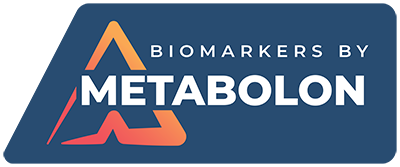Case Study
Biomarkers for Obesity
Metabolon identifies a metabolic signature of obesity and assesses metabolic health without the limitations of other costly technologies.

The study highlights the profound disruption of the metabolome due to obesity. It identifies a metabolome signature and assesses metabolic health without the limitations of other costly technologies. These findings suggest that metabolomics can be used as a clinical tool that analyzes obesity in the context of its metabolome perturbation rather than just BMI alone.

The study highlights the profound disruption of the metabolome due to obesity. It identifies a metabolome signature and assesses metabolic health without the limitations of other costly technologies. These findings suggest that metabolomics can be used as a clinical tool that analyzes obesity in the context of its metabolome perturbation rather than just BMI alone.

The Challenge: A Better Method to Characterize Obesity
Obesity is a common chronic disease that affects adults and children. Excessive weight increases the risk of other illnesses, such as diabetes and cardiovascular disease. Body mass index (BMI) is the most broadly used measure of obesity. Although BMI correlates well with individual health outcomes, it does not have the sensitivity to identify outliers that carry unique health consequences.1 There is a need for more precise methods of phenotyping and categorizing risk in large numbers of obese people to elucidate factors that make people susceptible to obesity and factors that lead to variability in the success of different obesity treatments.
Metabolon Insight: Characterization of Metabolites Associated with Obesity
In this study, the Global Discovery Panel was used to analyze blood serum from the TwinsUK cohort and blood plasma from the Health Nucleus cohort.2,3 The study’s goal was to characterize metabolites associated with obesity to provide insights into the molecular mechanisms that lead to this disease and associated clinical consequences.
The Solution: Providing Insights into the Mechanisms that Lead to Obesity
The authors found that obesity results in profound perturbation of the metabolome, with nearly 1/3 of the assayed metabolites associating with BMI. 49 metabolites were selected as a strong signature for the relationship between BMI and obesity. The 49 metabolites associated with BMI were primarily lipids and amino acids. Next, they built a model to predict BMI from the 49 BMI-associated metabolites. This model was used as a tool to define mBMI, the predicted BMI based on the metabolome. Using this model, they were able to identify outliers—individuals whose predicted mBMI was either significantly lower than the actual BMI (mBMI < BMI) or higher than their actual BMI (mBMI > BMI).
Individuals with a predicted mBMI that was lower than their actual BMI had levels of variables associated with BMI (eg, percent body fat, triglycerides, and waist/hip ratio) that were similar to those of individuals with normal weight and healthy metabolomes. Individuals with an mBMI prediction that was higher than their actual BMI had levels for these traits similar to those of obese individuals with obese metabolomes. An abnormal metabolome was also associated with an increase in cardiovascular events. Overall, the health consequences observed indicate that there is a durable benefit to maintaining a healthy metabolome signature. They also demonstrated an ongoing risk for individuals with an unhealthy metabolome despite having a normal BMI.
The Outcome: Metabolomics Identifies Outliers in Obesity
This study highlights the profound disruption of the metabolome due to obesity. It identifies a metabolome signature and assesses metabolic health without the limitations of other costly technologies. While mBMI was modeled by training on BMI, this metabolite signature had a better correlation than BMI with most health-related phenotypes measured in the study. These findings suggest that the metabolome can be used as a clinical tool that analyzes obesity in the context of its metabolome perturbation rather than just BMI alone. Because metabolomics identifies clinically meaningful heterogeneity in obesity, the mBMI metabolome signature could also act as a biomarker of response to novel therapeutics. Future obesity research can utilize Metabolon’s Panels and Assays to provide an independent method to characterize obesity and better identify outliers.
References
1. Cirulli ET, Guo L, Leon Swisher C, et al. Profound Perturbation of the Metabolome in Obesity Is Associated with Health Risk. Cell Metab. 02 05 2019;29(2):488-500.e2. doi:10.1016/j.cmet.2018.09.022
2. Moayyeri A, Hammond CJ, Hart DJ, Spector TD. The UK Adult Twin Registry (TwinsUK Resource). Twin Res Hum Genet. Feb 2013;16(1):144-9. doi:10.1017/thg.2012.89
3. Perkins BA, Caskey CT, Brar P, et al. Precision medicine screening using whole-genome sequencing and advanced imaging to identify disease risk in adults. Proc Natl Acad Sci U S A. 04 03 2018;115(14):3686-3691. doi:10.1073/pnas.1706096114




